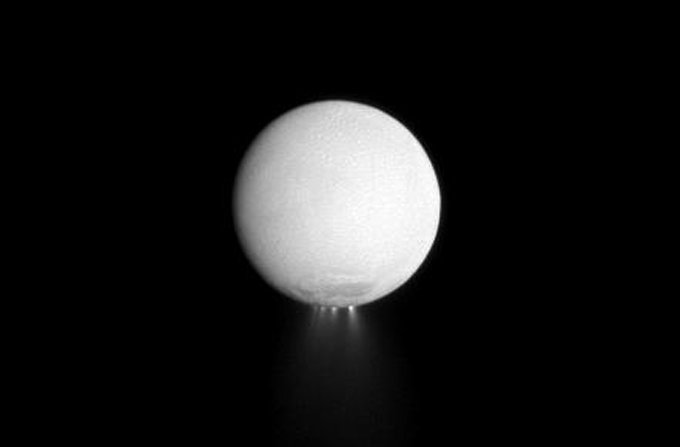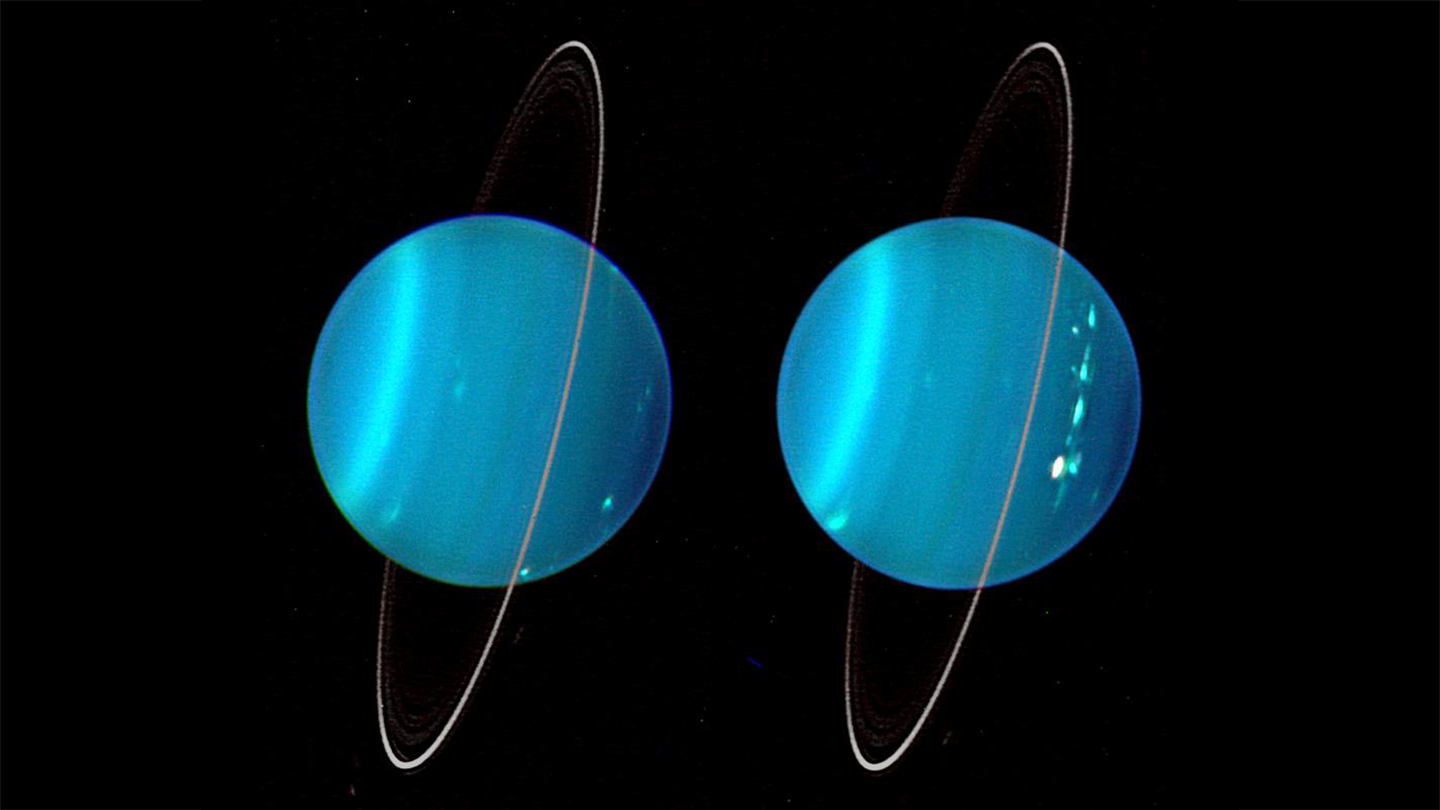U.S. planetary scientists want to explore Uranus and Enceladus next
The continuing search for life beyond Earth is driving many of the priorities for what’s next when it comes to U.S. planetary exploration. In a new report that could shape the next 10 years of planetary missions, Mars, Uranus and Saturn’s moon Enceladus have come out on top.
This report is the latest decadal survey for planetary science and astrobiology. Every 10 years, experts convened by the National Academies of Sciences, Engineering and Medicine compile a look at the state of the field and pull together a list of recommended priorities for the next decade of exploration. The new survey, which covers 2023 to 2032, will be used by NASA, the National Science Foundation and others to help guide which projects are pursued and funded.
The survey is meant in part “to identify the key scientific questions that are the most important” to pursue in the next decade and assess how best to answer them, astrophysicist Robin Canup said April 19 during a news conference after the report was released. Canup, of the Southwest Research Institute in Boulder, Colo., is a cochair of the steering committee for the decadal survey.
At the top of the list, the report recommends continuing the Mars sample-return effort by developing a mission that will retrieve, as soon as possible, the rock and soil samples that NASA’s Perseverance rover is collecting and storing (SN: 9/10/21). This multipart sample-return mission was also the top priority of the previous decadal survey, released in 2011 (SN: 3/7/11). Those samples could hold hints of past signs of life on the Red Planet.
The report also suggests that the next Mars mission, after the sample-return one, should look for signs of life in the ice as well as gaseous biosignatures in the atmosphere. That one is farther down the priority list, though.
Next in the line after the Mars sample-return mission is a large, several-billion-dollar mission to send an orbiter and probe to Uranus to explore the planet, its ring system and its moons. Uranus and the solar system’s other ice giant, Neptune, were visited once, in the late 1980s, when Voyager 2 flew by each.
The time has come to go back, scientists say (SN: 2/10/16). “I’m really thrilled to see that they picked a mission to go back and follow up on those incredible discoveries and those wonderful images that Voyager took,” says planetary scientist Linda Spilker of NASA’s Jet Propulsion Laboratory in Pasadena, Calif., who was not involved in the decadal survey. Spilker began her career with Voyager.
What’s more, better understanding the ice giants in our solar system could help scientists decipher the mysteries of faraway worlds. In the hunt for planets outside our solar system, the most common type of known exoplanets are those like Neptune and Uranus.
A mission to Uranus “will be transformative,” says planetary scientist Amy Simon of NASA Goddard Space Flight Center in Greenbelt, Md., and a member of the decadal steering committee. “We’re sure there’s going to be fantastic discoveries.”
This mission could launch in June 2031 or April 2032, the report suggests. After swinging by Jupiter to use the giant planet’s gravity to fling it faster, the spacecraft would arrive at Uranus 13 years after its launch. Once there, the orbiter would drop a probe in the atmosphere, sampling its composition as never before.
The next highest priority is sending an “orbilander” to Saturn’s moon Enceladus, a world known to have easily accessible liquid water (SN: 5/2/06). NASA’s now-defunct Cassini mission discovered in 2005 that this small moon spews geysers of water into space, and more recent research suggests that water coming from subsurface locales has salts, possibly indicating warm pockets of water interacting with rock — and brewing an environment that may host life (SN: 8/4/14).

This proposed spacecraft would arrive at the moon in the early 2050s, where it would first spend 1.5 years orbiting Enceladus, flying through its watery plumes to sample the liquid. Then the spacecraft would land on the surface for a two-year mission.
“If you want to go and look for life, Enceladus is a very good place to do it,” says planetary scientist Francis Nimmo of the University of California, Santa Cruz, and a member of the decadal steering committee.
Life on other planets isn’t the only thing on planetary scientists’ minds. The report also recommends continuing work on a mission to find and characterize near-Earth objects, like asteroids and comets, in an effort to protect life on the only planet where it’s known to exist.
Two medium-sized missions should be funded in the next decade too, the report recommends. While the survey doesn’t specify targets for these missions, nine higher-priority locales are singled out, including Venus, Saturn’s moon Titan and Neptune’s moon Triton.
The decadal survey also considered the state of the fields of planetary science and astrobiology — namely decreasing funding opportunities and how to improve diversity, equity, inclusion and accessibility efforts. For the latter, the committee looked at whether the community has diverse representation through their members.
“The thing that became abundantly clear is that NASA has done a terrible job of collecting those kinds of statistics,” Nimmo says of demographics in planetary science. For now, the recommendation is to better survey the scientific community, he says. “We’re not going to be able to solve anything until we actually have better statistics.”
For all the latest Technology News Click Here
For the latest news and updates, follow us on Google News.


